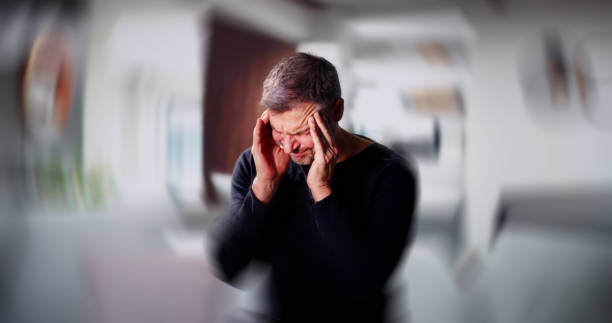Dizziness, this is a broad term that we use to describe many different sensations, from the room spinning, to lightheadedness, and even clumsiness. Luckily for us, treatment is possible (although maybe not for everyone’s clumsiness!)
Dizziness 101: From Causes to Cures
In order to treat dizziness, we must first define the different categories that make up the term “dizziness”, since it is an umbrella term:
- Vertigo: This is the sensation of movement, such as the room spinning or you spinning within the room, despite no movement truly occurring.
- Disequilibrium: This is the feeling of unsteadiness; you just can’t seem to get your balance.
- Lightheadedness: The feeling that your head is not quite attached to the body, the feeling of passing out is often associated with this. It is most commonly felt when we stand up too fast.
Why is This Happening?
Vertigo: Vertigo has many different causes. It can be coming from the inner ear, the nerve that connects the inner ear to the brain, the brain itself, or even the neck! You may have heard of “the crystals” in the inner ear getting loose and causing dizziness. This is called Benign Paroxysmal Positional Vertigo, or BPPV. The crystal essentially got loose from its normal position and it is messing up the signals being sent from your inner ear, which causes an intense spinning sensation when your head moves in a certain way. This is often felt with bending forward or rolling in bed. If the nerve is affected, it may be from nerve damage, an infection, a weakness in the nervous system, poor blood flow, or a lack of space for the nerve itself.
The brain itself may have difficulty interpreting the messages from the inner ear sent by the vestibular nerve. This can be from traumatic events like concussions, however it may also be from something small, like aging or a maladaptation to different issues that have been going on in the vestibular system. The neck may also cause some dizziness because the nerves in the neck go into the same part of the brain as the inner ear nerves, so you might just be getting some wires crossed!
Disequilibrium: This is a very general term because of the broad range of reasons that this may be happening. This can be as simple as the muscles in your hips and feet are weak, so when your weight shifts, your body can’t seem to get back to your center point. Sometimes you have adequate strength in your legs, but the nerves from your legs do not communicate well with your brain, so the reaction to correct your balance is delayed. As we age, both strength and nerve function tend to decline without the right level of activity, so both of these causes may be present at the same time.
Lightheadedness: Lightheadedness is often caused by a lack of blood flow to the brain. When we stand up too fast, our blood pressure takes a few seconds to rise to meet the new challenge of pumping blood against gravity. This makes the blood flow to the brain temporarily decrease, so we might feel lightheaded, have tunnel vision/see stars, or even feel like we are going to pass out. Other causes may be dehydration, poor diet, anemia, or other circulatory disorders.

What Can Be Done About My Dizziness
Vertigo
A physical therapist will be able to determine the cause of your vertigo in most cases. The treatment that follows will address the structure that is impaired. In some cases, such as BPPV or the crystals, this can take as little as 1-2 sessions to clear up with some repositioning maneuvers! In other cases, such as the brain not interpreting the signals well, this may take a long time to retrain the brain and get it used to the movements that bring on your symptoms. If the signal is coming from your neck, your physical therapist will perform gentle hands-on techniques in combination with exercises to help reduce stiffness and improve the nerve function, which should help your symptoms.
Disequilibrium
Finding the source of your disequilibrium is crucial. Having a team approach is often best, including a neurologist, your primary care physician, and a physical therapist in order to determine the root cause of your symptoms. Together, they will come up with a plan to get your balance improved.
Lightheadedness
In most cases, changing the dosage of blood pressure medication can be very helpful in reducing lightheadedness. Close analysis of medications and possible causes of your symptoms should be done with your cardiologist and primary care physician. If blood pressure is the cause, simple adaptive strategies, such as getting up slowly, performing leg movements (such as ankle pumps, knee kick outs, and seated marches) prior to standing will help raise your blood pressure slightly so that your body is ready to go! If blood pressure is not the cause, ensuring that you are taking in enough fluids and nutrition is key and a nutritionist will be able to guide you in these steps.
Next Steps!
If you feel as though you would like to do something to make a change with your dizziness, please contact our office at Empower U Physical Therapy and Performance to schedule your initial evaluation. You will see one of our Doctors of Physical Therapy, where they will help you find the root cause of your dizziness, through different tests and measures. Some testing will include head and neck movements, eye movements, as well as static and dynamic balance testing.
Give us a call to stop the dizziness! 302-217-3212




